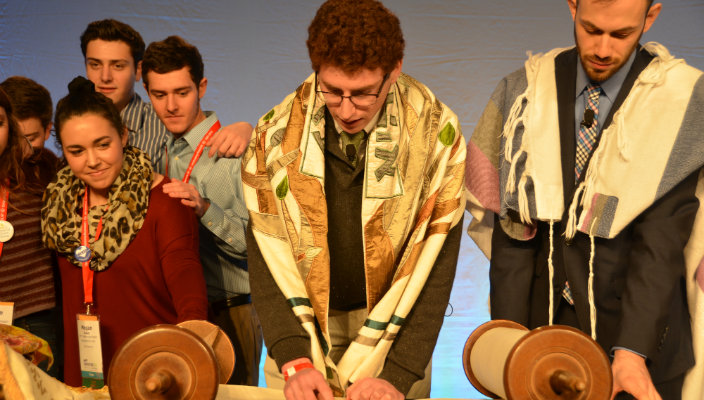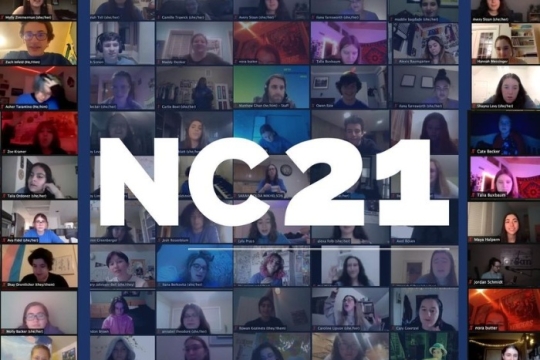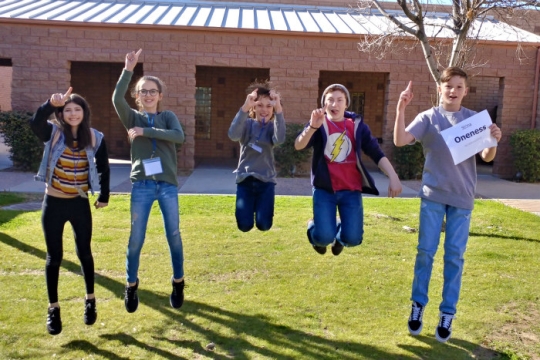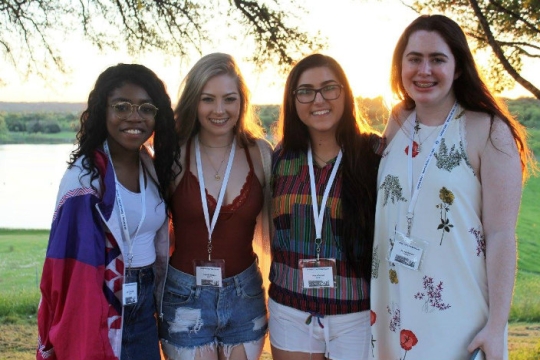
As a child, I spent a significant amount of my time in services counting – counting the pages until the end of the service, the number of lights on the ceiling, how many seats were occupied by congregants, or even nudging my Mom to find out the number of minutes left in the service. As an adult, I admit that I occasionally find myself slipping back into these old habits. If that happens to me as an adult, I can only imagine what it’s like to be a teen in many of our congregations. The High Holy Days offer us a chance to experiment with ways to design meaningful teen experiences, creating opportunities for teens to find space and community to be fully engaged and participating members of our congregations during this sacred time and throughout the year so that they are not left counting. Here are 5 guiding principles from my own experience working with teens for designing meaningful experiences during the holidays.
- Teens count too! Often when we begin to plan congregational events, we fall into the trap of planning for a few select groups. Teens have their own identities, interests, and needs that do not necessarily correlate with their parents, so we should recognize that teens are members in their own right and not just the children of members. The amount of time they spend engaging with one another on social media shows they are looking for ways to connect to something bigger than themselves. The themes of the High Holy Days offer us a rich starting point searching, accepting, believing, hearing, forgiving, changing, and blessing are just a few of the concepts from the holidays (and that teens are often wrestling with in their lives) that are present in our texts during the hagim. Utilizing these themes gives us meaningful ways to connect and can serve as a gateway to future engagement, continued engagement, or re-engagement in Jewish life.
“Question what is, imagine what could be, and go and make it happen.” –Dr Michael Zeldin
- Questions what is. After recognizing the unique traits of teens and their place in your congregation, examine what your congregation currently offers for teens during the holidays. Are they expected to be participants in services with their families? Do they serve as baby sitters in childcare? Do you offer anything that is targeted directly at their age and stage?
- Imagine what could be… The statement, “nothing for us without us” can be your mantra as you consider what steps to take in your congregation. How can you utilize teens to share their feedback on what would be meaningful to them? By inviting teens into the design process, you’ll empower them to lead their own dreams. Are there creative ways to use your physical assets, such as classrooms, multi-purpose spaces, and meeting rooms? What about the human assets that you have access to, such as teachers in your post B’nai Mitzvah programs, youth group advisors, engaged 20 somethings, and even other local youth professionals such as BBYO advisors.
- Go and make it happen. As Hillel so wisely said, “If not now, when?” Don’t wait to create the “perfect” experience for teens in your congregation as their needs are rapidly changing. Instead, acknowledge that your program is a pilot experience. This allows the teens to feel like they are a part of something new and innovative, and sets the expectation that you will be seeking feedback to modify and improve for coming years. Just because you lead something one way this year does not mean you cannot modify it for the coming year. Allow your teen High Holy Day experiences to be nimble, evolving, and owned by the teens. Engage charismatic adults in your congregation to serve as mentors in planning and facilitating these experiences.
- Reflect (and not only because it’s Elul!) Regular evaluation is one of the keys to a healthy organization. Evaluation not only highlights areas of growth but of success and the amazing things that may already be a part of your congregation as well as the areas in which a bit of innovation would lead you to greater strengths.
Although this article is centered on the High Holy Days and teen engagement, the theories within it can be applied to all areas of congregational life. Engaging teens in your congregational High Holiday planning and experiences can benefit the entire congregation. Having more members engaged, participating, and leading are the dreams of almost every congregation. Our community is counting on you to start the conversation -- what are you waiting for?
Barrett Harr lives in the suburbs of Detroit with her husband and two daughters. She currently serves as the Coordinator of Jewish Teen Engagement at the Jewish Federation of Metropolitan Detroit where she is spearheading a strategic action plan to engage the Jewish teens in the area utilizing new models of engagement.
Have something to say about this post? Join the conversation in The Tent, the social network for congregational leaders of the Reform Movement. You can also tweet us or tell us how you feel on Facebook.
Related Posts

Connecting During COVID: NFTY Convention 2021

"Like Dawn Skimming the Horizon": Riding the Changes in NFTY (Part 2)
